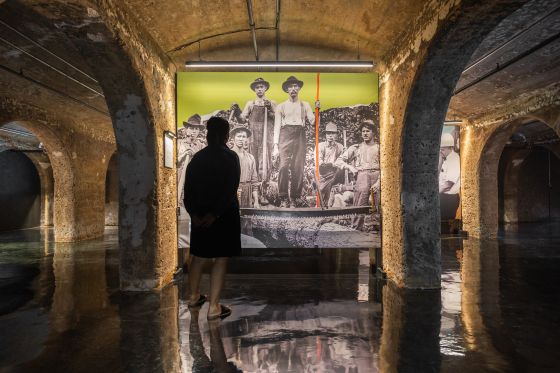History and Mission
MISSION
Develop, promote, and make accessible a cultural and artistic programming that is diversified and contributes to the Trifluvian community’s well-being and development, and that directly embodies Culture Trois-Rivières’ mission. Through its heritage department, Boréalis is committed to brighten up and enrich people’s everyday lives while promoting the values of creativity, rigour, respect, mutual aid, integrity and commitment.
Mandate
BORÉALIS is a place of history and memory that explores the social, economic and environmental aspects of Québec’s paper industry from the perspective of Trois-Rivières. The museum’s exhibitions, collection and programming are designed to raise visitors awareness of our material and intangible heritage, and to provoke reflection and discussion about the challenges of tomorrow.
HISTORY
Story of a Major Industry
The geographic location of Trois-Rivières, at the confluence of two major rivers, made it an important trading post and ideal place for exchanges between Europeans and First Nations. With this advantage, by the mid-19th century, Trois-Rivières boasted several sawmills, a new symbol of economic prosperity in the Mauricie region. The 20th century saw the arrival of the pulp and paper industry, driven by a growing demand for newsprint. This history is ours, the history of all of the people of Mauricie. These are the pages of our history that Boréalis has put on display. In a unique setting, visitors are invited to step back in time and discover the story of pulp and paper, tracing the elements that have shaped our regional identity: the Saint-Maurice River, the forest and the paper industry.
Designation by the Historic Sites and Monuments Board of Canada
On August 3rd, 2006, the Government of Canada designated Québec’s pulp and paper industry a National Historic Event. Québec’s pulp and paper industry joined the ranks of other national historic events such as the arrival of Jacques Cartier at Gaspé, shipbuilding in Québec, the fur trade in Lachine, the Treaty of Montréal in 1701, and the Ursulines of Trois-Rivières. This historical event can now be interpreted in a setting worthy of its importance: Boréalis.
A building filled with history.
The filtration plant of the Canadian International Paper Company (CIP) was built in the early 1920s. At the time, it was used to pump, filter and store the paper mill’s daily supply of water. By the mid-fifties, the plant could filter more than 20 million gallons of water a day, used to produce 1,000 tons of newsprint. Over the years, the plant has retained its authenticity, since the original architecture and machinery have been largely preserved. In fact, the filtration plant is one of the few remaining buildings that witnessed the birth of pulp and paper in Trois-Rivières. In 2006, it was designated a heritage site by the City of Trois-Rivières.
